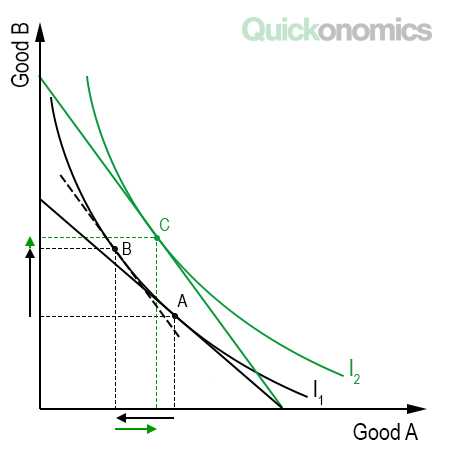What is the Income Effect?

The income effect is a concept in economics that refers to the change in an individual’s consumption patterns as a result of a change in their income. It is one of the key factors that influence consumer behavior and is closely related to the concept of purchasing power.
The income effect can be further divided into two components: the income effect on normal goods and the income effect on inferior goods. Normal goods are those for which demand increases as income increases, while inferior goods are those for which demand decreases as income increases.
For normal goods, the income effect is positive, meaning that as income increases, individuals will choose to consume more of these goods. This can be seen in the case of luxury items, such as expensive cars or designer clothing. As people’s income rises, they are more likely to purchase these items as a way to display their higher social status.
On the other hand, for inferior goods, the income effect is negative. As income increases, individuals will choose to consume less of these goods. This can be observed in the case of low-quality or generic products. When people have more money, they are more likely to opt for higher-quality alternatives.
Illustration of the Income Effect

The income effect is an important concept in economics that helps us understand how changes in income can affect consumer behavior and demand for goods and services. To illustrate the income effect, let’s consider a hypothetical example.
Imagine a person named John who earns a monthly income of $2,000. He spends $500 on rent, $300 on groceries, $200 on transportation, and $100 on entertainment. With his remaining income of $900, he decides to save $500 and spend the remaining $400 on clothing.
Now, let’s assume that John receives a salary increase and his monthly income rises to $2,500. With this increased income, John’s budget constraint expands, allowing him to spend more on goods and services.
As a result of the income increase, John decides to increase his spending on clothing. He now allocates $600 for clothing, which is $200 more than before. This increase in spending on clothing is a direct result of the income effect. With more disposable income, John can afford to purchase more clothing, which he may perceive as a luxury or an improvement in his standard of living.

Emily Bibb simplifies finance through bestselling books and articles, bridging complex concepts for everyday understanding. Engaging audiences via social media, she shares insights for financial success. Active in seminars and philanthropy, Bibb aims to create a more financially informed society, driven by her passion for empowering others.
